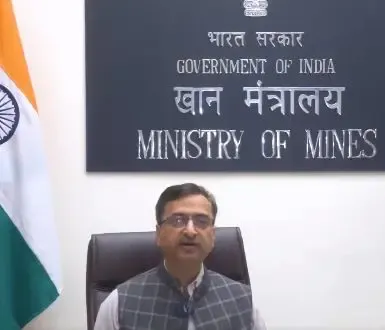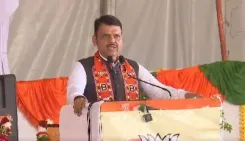Does India Need to Control Expenditure Growth in H2 FY26?

Synopsis
Key Takeaways
- Need for expenditure control: India must manage spending in H2 FY26.
- Tax revenue shortfall: Collections are significantly below expectations.
- Capital expenditure growth: Increased by nearly 40 percent year-on-year.
- Fiscal deficit concerns: Already risen by around 21 percent in H1 FY26.
- Non-tax revenues: Better performance due to RBI transfers.
New Delhi, Nov 25 (NationPress) A recent report indicates that India might need to curtail its expenditure growth during the latter half of FY26 in order to adhere to its fiscal deficit targets. The findings from Morgan Stanley revealed that although the government's capital spending has been robust, revenue collections have fallen short of expectations owing to sluggish nominal GDP growth.
According to Morgan Stanley, tax revenue growth in the first half of FY26 was considerably below budget forecasts, with collections rising merely 4.5 percent year-on-year (YoY), as opposed to the government's full-year target of 12.6 percent.
This downturn is attributed to low GDP deflator values and increased tax refunds. Direct tax revenues increased only 3.1 percent, while indirect tax collections saw a mere 2.5 percent rise, both significantly trailing their respective growth targets.
Conversely, government outlays surged, primarily propelled by capital expenditure. Total spending saw a growth of 9.1 percent in the first half of the fiscal year, contrasting with a 0.4 percent decline recorded in the same timeframe last year.
Capital expenditure experienced a remarkable growth of nearly 40 percent YoY, while revenue expenditure remained stagnant with just 1.5 percent growth.
The fiscal deficit has escalated by approximately 21 percent in the first half of FY26. To achieve the full-year deficit target of 4.4 percent of GDP, Morgan Stanley estimates that tax revenue growth must surge to around 30 percent in the latter half of the year.
While an improvement is anticipated due to stronger demand, enhanced compliance, and reduced refunds, the firm cautioned that tax collections might still fall short by 40-50 basis points of GDP.
On a positive note, non-tax revenues have shown better performance, bolstered by a record transfer from the Reserve Bank of India, which has helped mitigate the impact of weak tax receipts. Proceeds from divestment have also reached nearly 50 percent of the full-year target.
The report emphasizes that the government may need to tighten its spending in the coming months of FY26 to avoid failing to meet its deficit target. It also noted that trends in revenue deficits indicate early signs that the government is already moderating its spending in response to lower revenue inflows.









